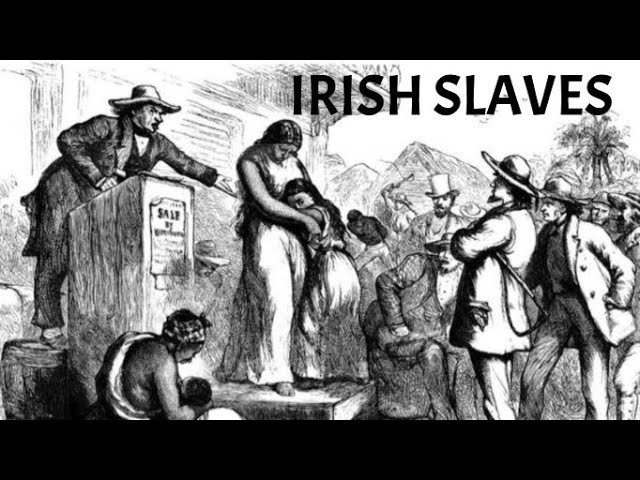The first recognized slave owner in the U.S. Colonies was Anthony Johnson, a black Angolan. Johnson himself was originally an indentured servant before he gained his freedom.
Slavery in the American colonies began in the early 17th century and rapidly became an entrenched institution, particularly in the South. Anthony Johnson, arriving in Virginia in 1621, served as an indentured servant and later acquired his own property and slaves.
Understanding the history of Anthony Johnson provides insight into the complexities of early colonial society and racial dynamics. Exploring his life demonstrates the shift from indentured servitude to racialized slavery. His legal battles, especially the case of John Casor, a servant he held as a slave for life, marked a significant turning point in American history. Despite the dark legacy of slavery, the story of Anthony Johnson underscores the paradoxes within the American narrative of freedom and servitude.

Credit: www.amazon.com
Unveiling The Identity Of America’s First Slave Owner
The story of the first slave owner in the U.S. colonies often comes with twists and contested narratives. Setting the historical record straight is crucial for understanding the complex and painful origins of slavery in America.
A Candid Look At Colonial Records
Colonial records provide the most reliable evidence about early American slave owners. Exploring archives, historians piece together fragments of the past. Such investigations reveal details about when and where slavery began to take root on the continent.
Documents from the 17th century, often handwritten and fragile, shed light on the identities of people involved in this dark chapter of history. The archival journey is critical to unveiling the truths that textbooks sometimes gloss over or get wrong.
Challenging Myths And Misconceptions
Misconceptions about America’s history with slavery abound. Some tales have distorted the facts, leading to widely believed myths. Confronting these myths is a step toward accurate historical representation.
- Dispelling folklore and legend with fact-based evidence.
- Examining the nuances of early colonial legal systems.
- Understanding the transformation from indentured servitude to racial slavery.
Through a careful review of the evidence, the first slave owner’s story becomes clearer. This process enlightens our view of the past and informs our understanding of the present.
The Inception Of Slavery In The Us Colonies
The inception of slavery in the US colonies traces back to a complex history. It began with the arrival of the first African slaves. In North America, slavery evolved from a legal, social, and economic perspective. By understanding its origins, we gain insight into one of the darkest chapters of American history.
Timeline Of Early Slavery
- 1619: The first African slaves arrive in Virginia.
- 1620s: Slavery begins to spread across the colonies.
- 1640: Virginia courts sentence John Punch, an African indentured servant, to slavery.
- 1650s: Slavery becomes more systematically enforced.
Legal Shifts And Landmark Cases
Legal cases and statues began shaping the practice of slavery:
- 1641: Massachusetts legalizes slavery through a new body of liberties.
- 1662: Virginia passes a law implying that children’s status follows the mother, known as partus sequitur ventrem.
- 1670: A law prevents African and Native American indentured servants from owning white indentured servants.
- 1705: The Virginia Slave Codes officially recognize slavery as a hereditary condition.
Anthony Johnson: A Controversial Figure
In the tapestry of American history, Anthony Johnson stands out as a man whose life story forces us to scrutinize the complexities of early colonial society. Once an indentured servant, Johnson rose to become a property owner with indentured servants of his own – but his most controversial status lies in the claim that he was one of the first recognized slave owners in the US colonies.
From Servitude To Ownership
Anthony Johnson’s journey from captive in Africa to becoming a landowner in Colonial Virginia is astounding. The transition from indentured life to freedom was fraught with challenges, yet Johnson not only gained his freedom but also acquired land.
Documents from the 1650s suggest that Johnson owned at least one African who worked as a servant. This marked a significant turning point.The concept of lifetime servitude began taking hold, giving rise to the institution of slavery.
Johnson’s Legacy Revisited
Recent historical discussions have painted a complex picture of Anthony Johnson, with some viewing him as a pioneering African American landowner and others labeling him as one of the forerunners of American slavery.
- First African landowner in Virginia
- Indentured servant turned property owner
- Associated with the beginnings of US slavery
His legacy stands as a stark reminder of how the distinctions between servitude and slavery were not clear-cut, and how individuals, regardless of origin, could become entwined in the emergence of a system whose consequences are felt to this day.

Credit: www.facebook.com
Comparative Slavery Practices Globally
The history of slavery spans different cultures and continents over centuries. Understanding these practices in a global context offers key insights into the origins of slavery in the US colonies. Different regions of the world had their unique protocols and systems of bondage, both influencing and distinct from each other. Here, we examine the European models and indigenous enslavement protocols that contributed to shaping the transatlantic slave trade.
European Models Of Bondage
- Serfdom in Medieval Europe: Bound to the land, serfs worked for lords.
- Debt Peonage: Workers paid debts through labor, often lifelong.
- Forced Labor for Projects: Governments used captives for building efforts.
Slavery in Europe varied from Russia to Spain. Serfdom, similar to slavery, saw peasants tied to the land and lord. This system influenced American slavery ideologies. Debt peonage, another European practice, forced laborers to work off debts, a form of semi-slavery. Captives were also used for massive government projects, from ancient Rome to Renaissance Europe.
Indigenous Enslavement Protocols
- Tribal Captives: Indigenous tribes captured and enslaved enemies.
- Ritual Servitude: Some were enslaved as part of spiritual practices.
- Exchange Networks: Native Americans had trade systems for slaves.
Native American tribes held their own models for enslavement. Captured warriors or tribe members could become slaves. Spiritual or cultural practices sometimes entailed a form of enslavement. There were well-established trade networks for exchanging captives long before Europeans arrived. These protocols varied significantly across different tribes and regions.
The Evolution Of Slavery Laws
In the emerging American colonies, slavery evolved through various legal frameworks. Understanding this transformation helps us grasp the nation’s history. This evolution was a critical element in shaping the US’s economic and social fabric.
Codifying Ownership
Slavery was first recognized in the legal codes of the British colonies in the 17th century. These laws began to outline the rules and conditions of slavery and formalized the status of slaves as property.
- 1641 – Massachusetts becomes the first to recognize enslavement within its Body of Liberties.
- 1661 – Virginia starts explicitly stating slave laws, offering legal protection to slave owners.
- 1662 – Virginia adopts the “partus sequitur ventrem” principle, marking the transition of slavery status from the father to the mother, thus ensuring perpetual enslavement.
Impact On Racial Dynamics
The codification of slavery laws had a profound impact on racial dynamics within the colonies. These laws solidified a racial divide, with people of African descent often subjected to enslavement.
| Year | Law Passed | Impact |
|---|---|---|
| 1705 | Virginia Slave Codes | Enslaved individuals are classified as real estate, and racial distinctions become more pronounced. |
| 1712 | New York enacts strict slave codes | Racial tensions increase, leading to heightened restrictions on the enslaved and free Blacks. |
This legal entrenchment of racial inequality laid the groundwork for a system that would not be undone for centuries.
Personal Narratives From The Dawn Of Us Slavery
To understand the stark realities of slavery’s inception within the US colonies, we turn to personal narratives. These firsthand accounts provide an unfiltered glimpse into the lives of those bound by chains. They are windows into an era that history books often distill into dates and laws. Through diaries, letters, and the oral histories preserved by descendants, we uncover the human element of slavery’s grim past.
Diaries And Letters
A rich source of information comes from the diaries and letters of the era. These personal writings reveal the daily lives of enslaved individuals and the systems that shackled them. For example:
- Entries detail hardships faced during long workdays.
- They show the impact of slavery on family connections.
- Letters plead for the end of bondage and injustice.
Accounts From Surviving Descendants
Years after the abolition of slavery, the stories endured. Surviving descendants have preserved these accounts. They offer a poignant connection to their ancestors’ resilience. Here’s how they contribute:
- Oral histories passed down through generations.
- Descendants relate tales of survival and resistance.
- Family records and heirlooms provide evidence of their legacy.
Confronting The Legacy Of Slavery Today
Confronting the Legacy of Slavery Today means understanding a dark past. Many people think about the first slave owner in the US colonies. This person marked a turning point in history. Today, people work to remember slaves and change the future. We explore how history shapes now and tomorrow.
Monuments And Memorials
Remembering slavery means looking at monuments. These large structures tell stories. They remind us of the past. Every statue and plaque holds a memory. They teach us lessons. Many places now honor slaves’ lives. We see their strength and struggle in these memorials.
- Statues of heroes stand tall in cities.
- Plaques share stories of slavery and freedom.
- Memorial parks have quiet spaces for reflection.
These places help us not forget. They bring the past to the present.
Educational Initiatives And Advocacy
Education shines a light on slavery. It fights ignorance. Schools and groups teach this history. They aim to stop the lies and myths. Kids and adults learn the truth.
- Books and films share real stories.
- Classes discuss the impact of slavery on society.
- Advocates work to right the wrongs of the past.
Open dialogue is key. It promotes understanding and unity.
| Action | Goal | Result |
|---|---|---|
| Teaching | Spread Knowledge | Informed Citizens |
| Advocacy | Change Policies | Justice and Equality |
| Dialogue | Promote Unity | Healing Society |
To tackle slavery’s legacy, we need education and action. Knowledge leads to change. People can face history and make progress together.

Credit: www.amazon.com
Frequently Asked Questions On Who Was The First Slave Owner In The Us Colonies
Who Were The First Slaves In America?
The first slaves in America were Native Americans and Africans brought by European colonizers in the 16th century.
Who Owned The Most Slaves In America?
Robert Carter III, a Virginia plantation owner, held over 500 slaves before initiating their gradual release in 1791.
Who Was The First Slave To Own Land?
Anthony Johnson, a former indentured servant, became the first black person to own property in the English colonies in 1651.
When Did Slavery Start In The World?
Slavery has existed since ancient times, dating back to the earliest civilizations over 4000 years ago.
Who Owned The First Slave In Us Colonies?
The first documented owner of a legally sanctioned slave in the American colonies was Captain John Smith in Virginia.
Conclusion
Exploring the complex history of slavery in the U. S. Colonies reveals powerful lessons. Anthony Johnson’s story sheds light on the harsh realities of the era. Unpacking these narratives is crucial for understanding America’s foundations. Let’s remember to delve into our past with empathy and a commitment to education, ensuring a future shaped by knowledge and inclusiveness.

